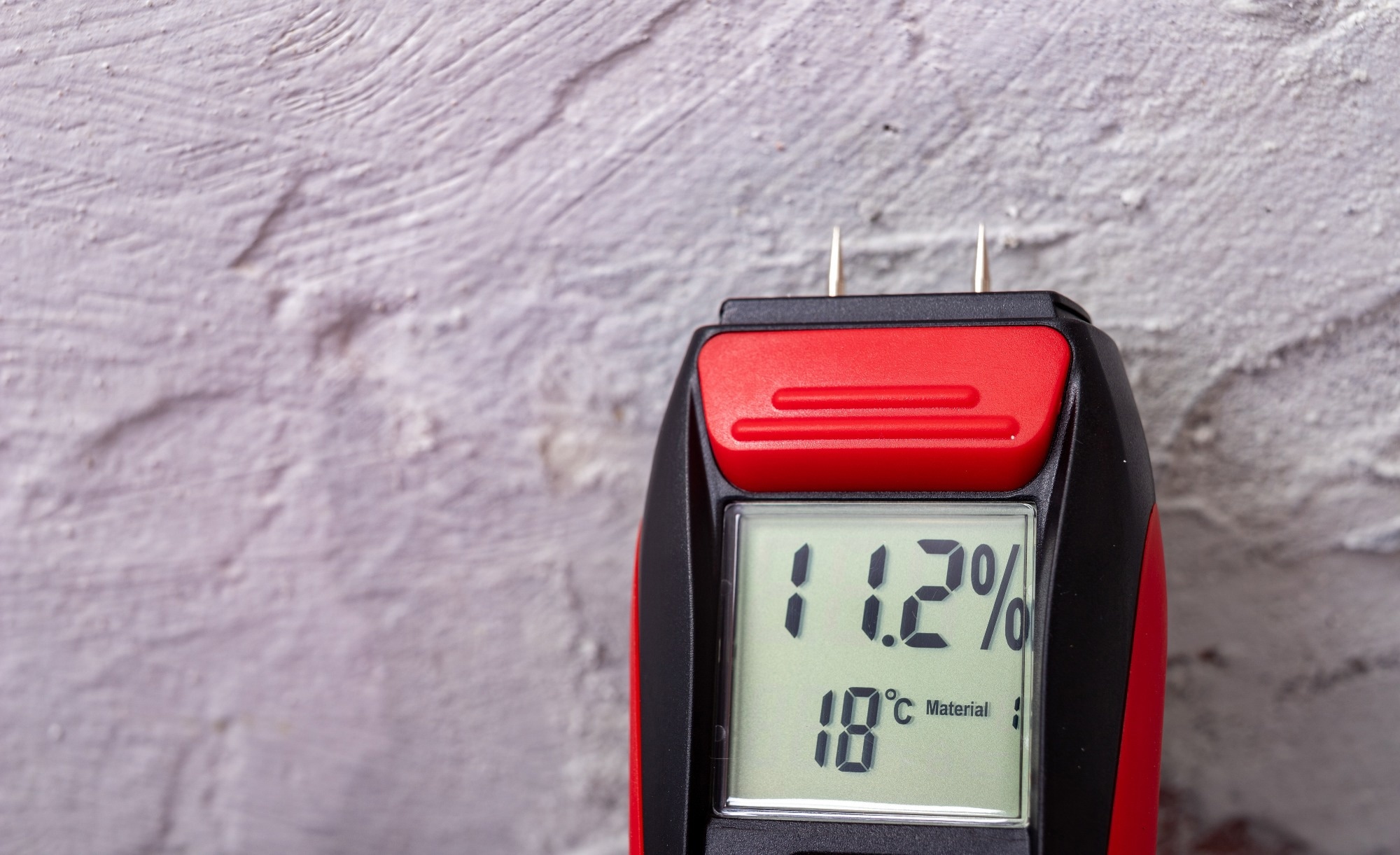Moisture dynamics in walls can now be modelled with digital twins. This approach combines experimental testing and simulation to improve material selection and support the design of more durable, energy-efficient buildings.
 Image Credit: Piotr Wytrazek/Shutterstock.com
Image Credit: Piotr Wytrazek/Shutterstock.com
Controlling moisture is essential in modern airtight buildings. Excess water vapor absorption weakens structural strength, accelerates degradation, increases thermal conductivity, and promotes microbial growth, reducing performance and indoor air quality.
Conventional assessment tools, such as the Glaser method, rely on steady-state assumptions and cannot capture the complicated and variable nature of moisture transport under changing weather. As a result, more advanced approaches are needed to represent how heat and water interact inside materials over time.
Digital Twins For Construction Materials
Published in Materials, researchers have studied five masonry materials commonly used in Central Europe: autoclaved aerated concrete (AAC), ceramic hollow bricks, sand-lime blocks, perlite concrete, and conventional concrete. Samples were finished with gypsum plasterboard to mirror real construction practice and placed under controlled laboratory conditions, with temperature and humidity fixed and artificial rainfall applied twice daily.
Moisture transport was measured using gravimetric methods as well as non-destructive techniques, including dielectric, resistance-based, and microwave sensors. Core samples were also taken at several depths, dried at high temperature, and weighed to establish the baseline moisture content. This data was then translated to build a digital twin of AAC walls.
The digital twin model was developed in MATLAB and used a nonlinear, anisotropic diffusion equation, solved with a two-dimensional finite-difference scheme. It incorporated a humidity-dependent diffusion tensor influenced by saturation and material orientation, together with realistic boundary conditions and uniform initial humidity. Calibration against the laboratory results allowed the model to simulate humidification and drying cycles with high accuracy.
Results Show Porous Materials At Risk
The experiments and simulations revealed that AAC and perlite concrete were most vulnerable to water uptake. After 30 days of simulated rainfall, AAC walls recorded moisture levels exceeding 19 % by mass near the surface and 18 % at deeper layers, far above the safe limit of 15 %. Denser materials, including sand-lime and conventional concrete, absorbed significantly less water.
The digital twin model accurately reproduced these results, showing how moisture gradients developed, redistributed, and moved toward equilibrium over 150 days. Its ability to capture long-term moisture dynamics demonstrated both accuracy and practical relevance. The study also confirmed that AAC walls remain highly moisture-sensitive, sustaining saturation that reduces thermal performance and increases the risk of microbial growth.
Practical Implications For Building Design
The study demonstrates how combining experimental data with simulation can provide a more reliable basis for construction decisions. Digital twins make it possible to compare materials under realistic conditions, anticipate long-term hygrothermal behaviour, and incorporate these insights into design practice. When connected with Building Information Modelling, such models can also support predictive maintenance and lifecycle assessments.
For architects and engineers working in humid or rainfall-prone climates, this model could provide a way to optimize material choice and design strategies without relying solely on extensive (and expensive) physical testing. It also lays the groundwork for extending digital twin methods to a wider range of porous materials.
Download your PDF now!
Looking Ahead
The researchers note that future work should integrate real-time climate inputs, including wind-driven rain and solar radiation, to improve predictive capability further. Extending the framework to other wall systems could make it even more broadly applicable across construction sectors.
As climate variability intensifies, the ability to simulate moisture transport with digital twins will become increasingly valuable. By combining laboratory data with advanced modelling, this research provides architects and engineers with a tool to design buildings that are energy-efficient and more resilient over time.
Journal References
Szymczak-Graczyk, A., Korentz, J., & Garbowski, T. (2025). Digital Twin Model for Predicting Hygrothermal Performance of Building Materials from Moisture Permeability Tests. Materials, 18(18), 4360. DOI: 10.3390/ma18184360, https://www.mdpi.com/1996-1944/18/18/4360
Disclaimer: The views expressed here are those of the author expressed in their private capacity and do not necessarily represent the views of AZoM.com Limited T/A AZoNetwork the owner and operator of this website. This disclaimer forms part of the Terms and conditions of use of this website.